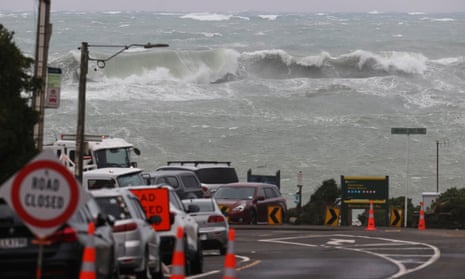Extreme Weather in New Zealand: Recent Storms, Impact, and Preparedness

New Zealand is renowned for its stunning landscapes and dynamic weather. But in recent weeks, the country has faced some of its most challenging weather events in years. This article explores the impact of recent storms on New Zealand, what caused these events, and how communities are responding.
Severe Storms and Extreme Conditions
In early May 2025, vast areas of New Zealand were placed under severe weather warnings. According to AP News, torrential rain and destructive winds led to a state of emergency in Christchurch, the South Island's largest city. In the capital, Wellington, wind gusts reached up to 150 kph (93 mph). Even for a city known for its gusty gales, this was unprecedented, with authorities issuing the city's first-ever highest-level red wind warning.
Flights were canceled, ferries between the North and South Islands stopped, and large sea swells battered the coastline. Over a thousand properties in the Wellington region lost power, while roads and universities closed to keep residents safe. Despite the widespread disruption, the country reported minimal injuries, highlighting the effectiveness of local emergency response systems.
The Meteorological Perspective
What triggered such intense storms in New Zealand? The Guardian explains that a deepening area of low pressure moved across the country, intensifying as it traveled east over the Tasman Sea. The Cook Strait, which separates the North and South Islands, funneled strong south-easterly winds, dramatically increasing their force. In some locations, rainfall topped 100mm within twelve hours, causing rivers to burst their banks. Snowfalls of over 50cm fell in certain mountainous areas. Coastal regions faced waves nearly six meters high.
Impacts on Local Communities
These storms left a mark on daily life across New Zealand. In Christchurch, emergency declarations followed flooding from swollen rivers. Urban and rural communities worked together to manage road closures and prevent property damage. Local schools and organizations acted quickly, sending students and staff home well ahead of the worst conditions.
Residents are used to wild winter weather, but the combination of wind, rain, snow, and coastal waves made this event truly exceptional. As Reuters reported, the scale of disruption demonstrated just how quickly New Zealand's weather can change.
Adapting to a Changing Climate
Experts note that New Zealand’s geography makes it highly vulnerable to extreme weather. The proximity of the ocean and rugged mountains leads to fast-changing conditions, especially during storm season. While communities are well-prepared for seasonal challenges, increasingly severe weather highlights the importance of climate resilience and readiness—topics now at the center of many local discussions.
Staying Safe and Prepared
If you're living in or traveling to New Zealand, staying alert to weather warnings is vital. Monitor official sources, follow local advice, and be ready to adjust your plans should a weather alert be issued. MetService provides up-to-date forecasts and warnings, which help keep everyone informed and secure.
Summary
Recent events in New Zealand serve as a reminder of nature's power and the need for strong community responses to weather emergencies. The teamwork seen during May's storms showcased the country's resilience and preparedness. As weather patterns continue to evolve, both residents and visitors must prioritize safety and stay informed. For further reading, see the weather summary on The Guardian and detailed reports by AP News.